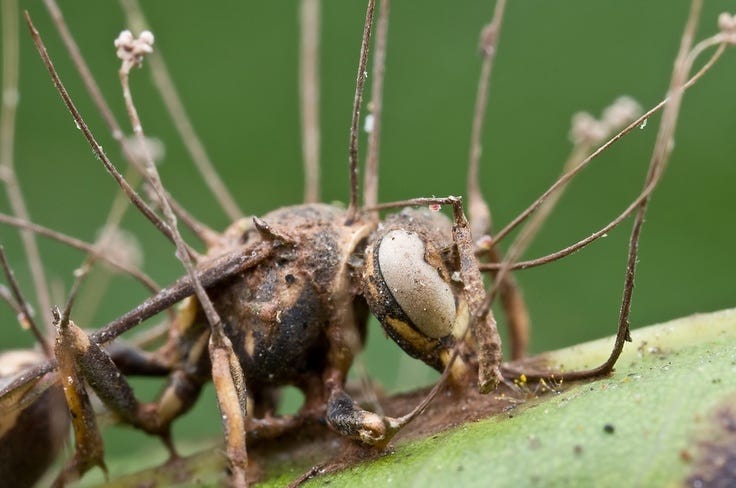Zombie Fungus Found in Scotland: A Real-Life Horror Story
In a remarkable discovery that has captured the attention of both scientists and fans of the popular video game and television series The Last of Us, a zombie fungus has been found in the temperate rainforests of Scotland. This fungus, known as Gibellula, is part of the Cordycipitaceae family and is notorious for its ability to infect and control spiders, effectively turning them into "zombies." The recent findings have sparked a wave of interest and concern, drawing parallels to the fictional narrative of a fungal pandemic depicted in the series.
The Discovery
The Gibellula fungus was discovered by amateur naturalist Ben Mitchell as part of the West Cowal Habitat Restoration Project. This project aims to survey and restore the unique biodiversity of Scotland's rainforests. The fungus was found infecting spiders, showcasing its characteristic behavior of taking over the host's body and manipulating its actions before ultimately consuming it from the inside out.
What is Gibellula?
The Gibellula fungus is a parasitic organism that infects its spider hosts through fungal spores. Once inside, it grows within the spider's body, eventually leading to the host's demise. The fungus's life cycle is gruesome; it digests the spider's insides while leaving the exoskeleton intact, creating a haunting image reminiscent of the zombie apocalypse portrayed in The Last of Us.
Cultural Impact and Reactions
The discovery has not only intrigued scientists but has also resonated with fans of The Last of Us, who are familiar with the Cordyceps fungus that serves as the basis for the series' narrative. In the game and show, this fictional fungus infects humans, turning them into mindless, zombie-like creatures. The real-life Gibellula fungus, while not a direct threat to humans, has drawn attention due to its similar parasitic behavior.
Expert Opinions
Experts have weighed in on the implications of this discovery. Dr. George Thompson, a professor of clinical medicine, noted that while the Gibellula fungus shares similarities with the Cordyceps fungus, it is important to clarify that it poses no threat to human health. The World Health Organization has also stated that while fungal infections are on the rise, the likelihood of a zombie-like pandemic affecting humans remains extremely low.

The Broader Context of Fungal Infections
The fascination with fungi, particularly those that exhibit parasitic behavior, has grown in recent years. The Cordyceps fungus, which inspired the narrative of The Last of Us, is known for its ability to infect and control insects, such as ants and spiders. This phenomenon raises questions about the potential for similar infections in other species, including humans, although such scenarios remain firmly in the realm of fiction.
Biodiversity in Scotland's Rainforests
The discovery of the Gibellula fungus highlights the rich biodiversity present in Scotland's temperate rainforests. These ecosystems are home to a variety of unique species, many of which are still being studied and documented. The ongoing efforts to restore and protect these habitats are crucial for preserving the delicate balance of life within them.
Public Interest and Media Coverage
The news of the zombie fungus has been widely covered across various media outlets, generating significant public interest. Articles from sources like STV News, Green Matters, and The Ecologist have detailed the findings, emphasizing the connection to popular culture and the implications for understanding fungal behavior in nature.
Social Media Buzz
Social media platforms have also seen a surge in discussions surrounding the Gibellula fungus. Fans of The Last of Us have expressed both fascination and concern, with many sharing memes and commentary about the potential for a real-life zombie apocalypse. This blend of science and fiction has sparked a lively conversation about the nature of fungi and their role in our ecosystems.

The discovery of the Gibellula fungus in Scotland serves as a reminder of the incredible complexities of nature and the often bizarre behaviors exhibited by organisms within it. While the idea of a zombie fungus may evoke fear and intrigue, it is essential to approach such topics with a scientific perspective. The real-world implications of this discovery are far less dramatic than those portrayed in fiction, yet they offer valuable insights into the fascinating world of fungi and their interactions with other species.
As research continues, the Gibellula fungus will undoubtedly remain a topic of interest for both scientists and the public alike, bridging the gap between reality and the imaginative narratives that capture our collective consciousness.





